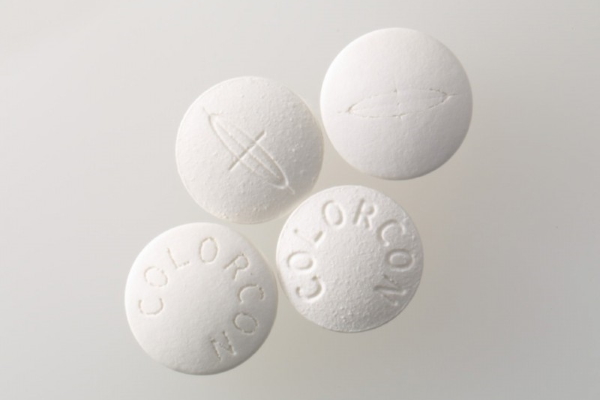
Pharmaceutical excipient firm Colorcon has launched its on-dose authentication system SoteriaRx, which it says can help protect patients from potentially harmful drugs, and drugmakers from reputation-damaging counterfeits.
The platform of physicochemical identifiers (PCIDs) – a term coined by the FDA in guidance published several years ago – means that a medicine can be checked for authenticity anywhere in the supply chain, even if it has been removed from its packaging, says the company.
Colorcon has built SoteriaRx on the back of collaborations with TruTag Technologies and Applied DNA Sciences, which gave it access to silicon dioxide and DNA-based taggants, respectively, that are both Generally Recognised as Safe – or ‘GRAS’ – which means they can be incorporated in ingested products.
TruTag’s taggants are already being used in medicines that have been approved for marketing. So far, APDN’s DNA markers haven’t been used in approved drugs, but they are being deployed in other industries like electronics and textiles.
The taggants are incorporated into Colorcon’s established products like Opadry coatings or Opacode inks, which are applied onto solid oral dosage forms such as tablets and capsules, according to Kelly Boyer, general manager of Colorcon’s film coatings division.
The customised taggants can be coded to include information such as customer name, product and production site, and added to the coating or ink during the production process, for delivery to and use by the customer.
“By incorporating microtags, the pill itself effectively becomes a barcode which can be digitally read and recorded, providing instant authentication,” she says.
Detecting the taggant relies on the technique that will be unique to each customer’s specific taggant, with testing carried out by Colorcon under a service model, and the potential also to allow smartphone authentication in the supply chain.
Deploying the taggants takes place alongside the regular coating or ink application, so there’s no additional equipment or effort required by the medicine producer.
The size of the problem
Boyer says there is still a clear need to reduce the prevalence in the market of falsified medicines, which may contain contaminants, too much or too little active ingredient, or no active ingredient at all.
Estimates are that between 10 and 30 per cent of medicines sold in developing countries are counterfeit, and the international trade in these illicit drugs accounts for 2 per cent of total pharma revenue each year – an impact of around $200bn according to some sources.
Among drugs bought online the proportion of counterfeits is even higher, potentially more than 50 per cent, according to the World Health organization (WHO), while Interpol has suggested that they may cause up to a million deaths per year worldwide.
Another problem for the pharma industry is diversion – the illegal distribution of prescription drugs, often for purposes not intended by the prescriber – which is particularly prevalent in some product categories such as opioid painkillers.
As diverted (as well as counterfeit) opioids are generally sold as loose tablets – not in the original packaging – on-pack protections such as serial numbers aren’t of use in tackling the issue.
Serialization measures rolled out in Europe and the US have in some respects moved “from an initiative that was focused on the patient to one that has become more of a compliance issue,” according to Colorcon.
“If the true objective is to protect patient safety and consumer health, then a multi-layered approach to supply chain securitisation which includes product authentication will provide the best option,” it says.
Colorcon argues that serialization alone isn’t enough to protect against falsification, as barcodes can be copied – which assumes the counterfeit can get to the point of dispensing faster than the legitimate drug – and there have been incidents of fake drugs being placed in genuine packaging.
Serialization also requires a capital investment that may be out of reach of smaller producers operating in some lower-income countries. Meanwhile, current authentication features that can sit alongside serialized barcodes are often also located on the package.
According to Colorcon, development of an Opadry coating based on molecular taggants from APDN has been completed and available for commercial sale, and it is still in the development stage with TruTag taggants and expects to launch towards the end of this year.
It’s worth noting that other companies trying to expand the use of PCIDs in pharma have met with limited success, with some going to the wall and others now switching their attention to other product categories.
In part, that may be because of the sizeable investment already undertaken by the pharma industry to meet serialization regulations coming into force in many world markets, and a sense that should be enough to tackle the problem.
The entry of Colorcon – a major excipient supplier already working with a large swathe of drugmakers both large and small – could be the catalyst to make use PCIDs more widespread.
©
SecuringIndustry.com
 | back to top
| back to top





